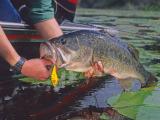Mar 22, 2011
Study show short-term corticosteroids benefits for severe flu
Rapid, short-term corticosteroid therapy combined with oseltamivir (Tamiflu) can dramatically improve severe pneumonia in children who have 2009 H1N1 infections, South Korean doctors reported today in a letter in Critical Care. They describe their experience treating 32 pediatric patients with severe respiratory distress requiring oxygen therapy at two hospitals in Daejeon. Flu was confirmed by reverse transcriptase-polymerase chain reaction (RT-PCR) testing. Seventeen of the patients at one hospital received corticosteroids, and 15 at the other facility did not. Researchers found that rapid high-dose corticosteroid therapy (methylprednisolone, 10 mg/kg/day) shortened the duration of fever and oxygen therapy, rapidly resolved pneumonia infiltrations, and possibly avoided progression to acute respiratory distress syndrome. While acknowledging that the World Health Organization (WHO) does not recommend corticosteroid
therapy for flu patients due to possible complications and lack of clinical trials, the researchers said short-term use may avoid problems and that more controlled clinical trials are needed to evaluate the drug's use in severely ill patients.
Mar 22 Crit Care abstract
2009 H1N1 virus infected three animals at San Diego Zoo
The 2009 H1N1 influenza virus was detected in three animals of diverse species at the San Diego Zoo in the fall of 2009, further broadening the virus's range of animal hosts, according to a letter published by Emerging Infectious Diseases (EID). The virus was found in a 12-year-old American badger, a 19-year-old Bornean binturong, and a 7-year-old black-footed ferret. The badger and binturong got severely sick with pneumonia and had to be euthanized, but the ferret had a mild illness and recovered with antibiotic and fluid treatment. The source of the infections was not determined but was probably a human. Ferrets are known to be susceptible to influenza A viruses, but such cases have not been previously reported in badgers or binturongs, the report says. Other species that have been naturally infected with flu viruses include swine, a dog, cats, turkeys, skunks, cheetahs, and giant anteaters, and
experimental infections have been reported in mice and cynomolgous macaques. "The ubiquity of pandemic (H1N1) 2009 and its ability to infect a diverse range of hosts is worrisome for the health of wildlife and for the possibility of creating additional reservoirs that could alter the evolution of subtype H1N1 viruses by applying varied selection pressures and establishing new ways of generating unique reassortant strains," the authors say.
Mar 18 EID letter
Study finds reduced antibody response to 2009 H1N1 in pregnant women
An Australian study in the Journal of Infection shows that pregnant women had a reduced antibody response to 2009 H1N1 influenza infection when compared with patients in general and with age-matched nonpregnant women. The researchers collected baseline and convalescent serum samples from 88 adult patients (51 women, 37 men) who had confirmed H1N1 infections. Using hemagglutination inhibition assays, the researchers screened the samples for responses to the virus. The convalescent samples showed the 14 pregnant women included in the study had a 2.04-fold increase in antibody titer to the virus, which was not significant and was well below the 5.06-fold increase for the overall group and the 8.5-fold increase in age-matched, nonpregnant women. The authors note that pregnancy was identified as risk factor for increased morbidity and mortality in 2009 H1N1 cases and say the relationship between lower antibody
responses and disease severity warrants further investigation.
Mar 21 J Infection abstract
WHO suggests beefing up global food safety project
An international network for sharing information about foodborne disease risks that began in 2004 is helping form partnerships but faces challenges in finding new future usefulness, according to the WHO. The 24-page report, issued Mar 18, details progress made since the International Food Safety Authorities Network (INFOSAN) was formed. The program is jointly run by the WHO and the United Nations Food and Agricultural Organization. In its review, the WHO reviewed INFOSAN's achievements and identified six challenges, which include enhancing response times to information requests and adding more human resources to fulfill its mission. The WHO suggested five future directions, such as launching an improved INFOSAN Web platform to provide alerts and improve online collaboration among members.
Mar 18 WHO report


















